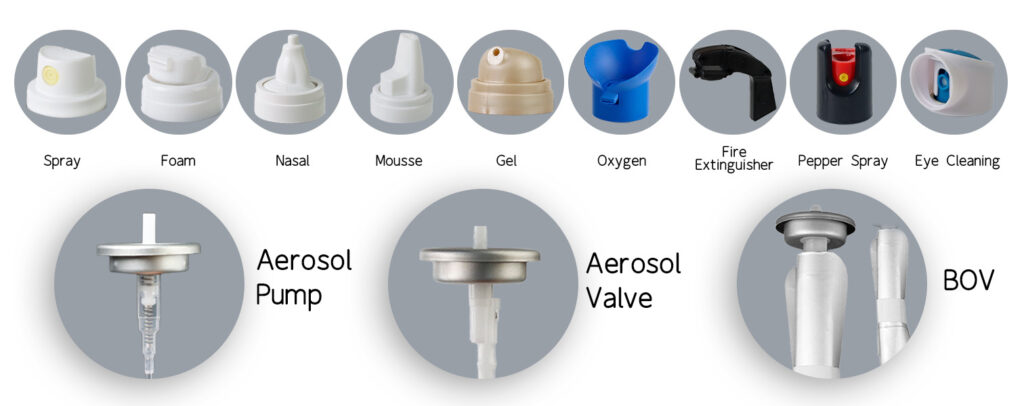Don’t Rush to Change Suppliers!
3 No-Cost Cost-Saving Methods for Optimizing Aluminum Aerosol Can Design
In today’s competitive market, companies are constantly seeking ways to reduce costs without compromising quality. For businesses that rely on aluminum aerosol cans as their primary packaging material, optimizing the design of these cans can be a highly effective strategy to achieve cost savings.
However, many companies immediately consider changing suppliers when they encounter cost challenges, often overlooking the potential for savings through smarter design. In this article, we’ll explore three practical, no-cost methods to optimize aluminum aerosol can design, helping you save money while maintaining or even improving product performance. Plus, if you’re unsure about how to implement these strategies, we can assist you with our full-service design solutions—reach out, and we’ll help you every step of the way.

Simplify the Can Body Geometry
1. Simplify the Can Body Geometry
One of the most straightforward ways to reduce costs is to simplify the geometry of the can body. Aluminum aerosol cans are typically designed with a cylindrical shape, which is both functional and aesthetically pleasing. However, intricate or unconventional shapes can lead to increased material usage and manufacturing complexity. By adopting a simpler design, you can minimize the amount of aluminum required, which directly impacts cost.
How to Implement This
- Focus on Cylindrical Design: Stick to the classic cylindrical shape, as it is inherently efficient in terms of material usage and production. Avoid overly complex shapes that may require additional material or specialized molds.
- Minimize Wall Thickness: Work with your supplier to determine the minimum wall thickness required for your product. Thinner walls mean less material usage, but they must still provide adequate protection and functionality.
- Streamline Features: Eliminate unnecessary features like ridges, grooves, or decorative elements that add complexity to the design. These features often require additional material and can slow down production.
Benefits
- Reduced Material Costs: Simplified designs require less aluminum, cutting down on raw material expenses.
- Faster Production Times: Simpler shapes reduce the time needed for mold creation and production, potentially lowering labor costs.
- Consistent Quality: A streamlined design ensures that the can is more uniform, reducing the likelihood of defects during manufacturing.
Optimize the Can Top and Bottom Design
The top and bottom of the can are critical components, but they also present opportunities for cost optimization. These areas often involve additional manufacturing steps, such as crimping or sealing, which can increase costs if not designed efficiently.
How to Implement This
- Standardize the Top Design: Avoid custom or overly complex top designs unless absolutely necessary. Standardized tops are easier to produce and often come at a lower cost.
- Use Cost-Effective Sealing Methods: Evaluate whether your current sealing method is the most efficient. For example, switching from a double-seam closure to a single-seam closure can reduce production time and material usage, provided it meets your product’s sealing requirements.
- Adjust Bottom Diameter: A slightly larger bottom diameter can allow for better stacking and stability during transportation and storage. This can reduce the risk of damage and, in turn, lower costs associated with returns or repairs.
Benefits
- Lower Production Costs: Standardized and simplified top and bottom designs reduce the need for specialized tooling and processes.
- Improved Efficiency: Optimized sealing methods can speed up production and reduce waste.
- Enhanced Durability: A well-designed bottom ensures that the can is more stable, reducing the likelihood of damage during shipping.

Optimize the Can End Configuration
The can end configuration is another area where design optimization can lead to significant cost savings. The end of the can is where the valve and other functional components are located, and its design directly impacts both the functionality and the cost of production.
How to Implement This
- Use a Standard Valve Configuration: Unless your product requires a unique valve design, stick to standard configurations. This reduces the need for custom molds and lowers production costs.
- Minimize the Number of Components: Fewer components mean simpler assembly and reduced material usage. For example, combining multiple parts into a single component can streamline the manufacturing process.
- Optimize the End Thickness: Similar to the can body, adjusting the thickness of the can end can reduce material costs without affecting functionality. Work with your supplier to determine the optimal thickness for your product.
Benefits
- Reduced Material and Labor Costs: Simplifying the can end configuration reduces the number of components and the complexity of assembly.
- Improved Functionality: A well-optimized end design ensures that the valve and other components work efficiently, reducing the risk of product failure.
- Consistent Quality: Fewer components mean fewer opportunities for errors during production, leading to higher overall quality.
Optimizing the design of aluminium aerosol cans is not necessarily an expensive effort. By simplifying the tank body geometry, optimizing the top and bottom design, and simplifying the tank end configuration, you can achieve significant cost savings without sacrificing quality or functionality. These strategies can not only help you reduce expenses, but also enhance production efficiency and product durability, achieving a win-win situation for both your business and your customers. If you are unsure how to implement these design optimizations or need assistance in any aspect of the process, please do not hesitate to contact us.
As experts in aluminum packaging design, we offer comprehensive services to help you achieve your goals. Whether you need assistance in mold making, material selection or production optimization, we can ensure that your packaging is cost-effective and of high quality. Remember, the key to successful cost savings lies in thoughtful design and cooperation with suppliers. By working together and focusing on these three areas, you can reduce costs, improve efficiency, and maintain the integrity of your products without the need to rush to change suppliers. Let us know how we can further assist you!
Über uns
Hygintek ist ein führender Hersteller von nachhaltigen und umweltfreundlichen Metallverpackungen für Lebensmittel und Getränke, Medizin und gesunde Marken und bietet ihnen eine Verpackungslösung und einen Service aus einer Hand.

